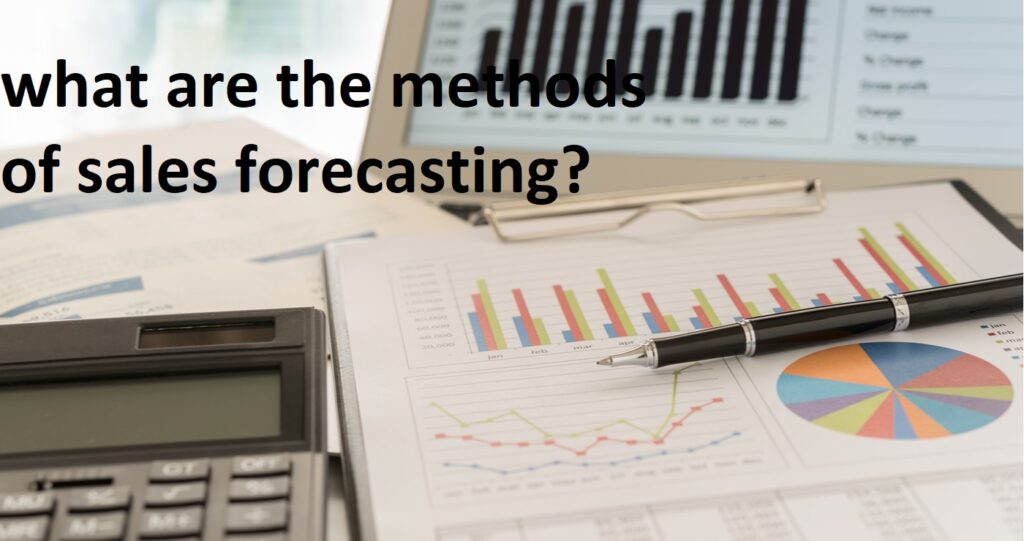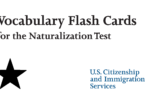Sales forecasting, as the name suggests is a process of estimating sales an organization will be able to achieve in a given time period. A proper sales forecast helps an organization make the right investment decisions, reduce spending, and remain agile in changing market situations. In addition, such forecasts allow the business leaders to identify potential issues and take necessary steps to mitigate them.

In the following sections we will look at:
- Importance of sales forecasting
- Types of sales forecasting
- Sales forecasting process
- Factors that influence sales forecasting
- Sales forecasting methods – Quantitative and Qualitative
- Sales forecasting formula and examples
Importance of Sales Forecasting
- B2B Sales forecasting helps in easily adjusting supply for the products if there is temporary spike in demand.
- It facilitates strong inventory control since weaknesses of over stocking and under stocking can be avoided.
- Sales forecasting facilitates sale territory allocation as well as re-allocation.
- Such forecasting aids forward planning since purchase of raw material, warehousing requirement, need for labor and transport facilities, plant layout, etc. are adjusted as per the sales volume an organization expects.
- It becomes possible to search out sales opportunities and adjust advertising programs according to the sales forecast.
- Forecasting helps in measuring efficiency of sales department.
Types of Sales Forecasting
There are different types of sales forecasting, let us look at them here.
Length of Sales Cycle Sales Forecasting | Opportunity Stage Sales Forecasting | Intuitive Sales Forecasting | Historical Sales Forecasting | Multi-variable Analysis Sales Forecasting | Pipeline Sales Forecasting
Length of Sales Cycle Sales Forecasting
This type of forecasting relies on objective data and utilizes information about the time span of individual opportunities, also known as sales cycle average length to predict sales.
This method needs the sales cycle to last for certain months on average and the salesperson should be working on any particular account for at least a few months. This technique helps sales managers know more about opportunities that are present in the pipeline.
Opportunity Stage Sales Forecasting
This sales forecasting technique helps in dealing with sales predictions during different stages in the sales funnel. Here, there is heavy dependence on historical data and it helps in understanding data sources as well as their priorities.
Intuitive Sales Forecasting
Here, business data is used for developing a forecast analysis. Available data is utilized for generating demand requirements so that intuitive and improved planning modules can be created.
Since a forecasting background is not necessary, it becomes easier to develop a precise forecast and proves to be useful during the early stages of business.
Historical Sales Forecasting
Historical sales forecasting takes a top-down approach and makes use of multiple estimation techniques.
Here, historical data is utilized as a benchmark for forecasting sales. For instance, if an upward trajectory has been maintained over the last year, then the sales forecast for next month will be reflecting such a steady increase.
Multi-variable Analysis Sales Forecasting
In this type of forecasting predictive analytic processes and tools are used. In addition, other factors are incorporated like the possibility of closing a sale based on the nature of the opportunity, sales cycle length, etc.
Pipeline Sales Forecasting
In pipeline sales forecasting the aim is to build a healthy pipeline and succeed with predefined deals. The method proves to be useful when there is plenty of variance in the sales pipeline. Moreover, this technique takes into account current opportunities available within the sales pipeline.
What is the sales forecasting process?
The process of forecasting sales involves the implementation of several repeatable steps for accurately predicting sales for a certain time period. Establishing the right process is a critical element that ensures proper sales management.
Good sales forecasting process helps an organization save time, improve sales linearity, and increase the accuracy of their sales forecasting. However, to create the right process you will have to follow the undermentioned step and work accordingly.
- Step 1: Determine objectives
- Step 2: Develop a forecasting procedure
- Step 3: Choose a forecasting technique
- Step 4: Collect and analyze available information
- Step 5: Make and finalize a forecast
- Step 6: Evaluate and perform necessary modifications
What are the factors that influence sales forecasting?
There are different factors that influence sales forecasting performed over the long, medium, and short term, let us look at them here.
Factor #1: Economic Conditions
Before any sales forecast is made, it is important to take into account different economic conditions prevalent at that time. For instance, it is necessary to evaluate economic trends such as Deflation or Inflation, which tend to have an impact on the business. Thus, good knowledge of general, political, and economic trends helps in providing a more accurate sales forecast.
Factor #2: Consumer Categorization
Accurate forecasting of sales volume becomes possible when consumers are categorized correctly based upon their financial conditions, sex, age, and other demographic details.
Factor #3: Competitor Analysis
Every firm has to face competition from other businesses and it becomes necessary to analyze what other companies are doing. Such analysis should include aspects such as technological improvements, pricing policies, promotional activities, and design changes implemented by competitors in your industry.
Factor #4: Changes Within Your Organization
Changes taking place within your organization like changes in advertising policy, pricing, product quality, etc. influence future sales. Similarly, sales can improve when prices are reduced, discounts are provided to customers, sales promotion activities are increased, and similar other initiatives are taken.
Sales Forecasting Methods – Quantitative and Qualitative
Quantitative forecasting focuses on the number and hard data analysis. On the other hand, qualitative forecasting depends upon expert opinions and educated estimates. When an organization uses both techniques for estimating expenditure, production, revenues, and sales, it helps in creating more precise and accurate plans.
Quantitative Forecasting
In quantitative forecasting, historical data is utilized like previous revenue and sales figures, statistics about website traffic, and financial as well as production reports. In addition, analyzing sales data helps in planning labor and production needs for the next year on the basis of the previous year’s quarterly or monthly figures.
Additionally, this type of objective forecasting utilizes projections that rely on trend analysis, statistical modeling, and similar other details available from expert sources like academic institutions, trade associations, and government agencies.
Lastly, in quantitative forecasting census data is analyzed for a particular geographical location, reports such as sales reports are reviewed to determine products that are experiencing a slowdown in sales and those which are experiencing an increase in sales.
Qualitative Forecasting
This type of forecasting utilizes the instincts and experience of business experts. Here, data interpretation is used in conjunction with the professional expertise of experts. For instance, when sales projections are to be made, the effect of new advertisement campaigns is estimated, the influence of new technologies on the purchase behavior of customers is analyzed, and current trends are considered.
Additionally, sales representatives are asked about sales projections for the next year, consumers are requested to share information about their future product needs, and inquiries are sent to distributors to know about the products that are selling badly or selling well.
Thus, this sales forecasting method focuses on the experience, judgment, opinion of experts, and is entirely subjective.
Sales Forecasting Formula and Examples
Here, we will explore a few sales forecasting examples and the formula that is used during such a forecast.
Sales Forecasting on the basis of Historical Data
Suppose, for a company recurring revenue last month was at 1,50,000 and the sales revenue for the last twelve months has grown by about twelve percent on a monthly basis. However, in the same time period, the monthly churn amounted to around one percent.
According to these historical details, 1,66,500 will be next month’s revenue forecast. Here, as per the sales forecasting formula, revenue for last month is multiplied by expected growth, and the expected churn is subtracted from the same to arrive at the final figure.
Sales Forecasting on the Basis of Current Funnel
Let us assume there are 3 opportunities open this month:
- One which received complete demo and carries 1,500 as expected value.
- Another one where sales person had a phone call and the expected value stands at 1,000.
- Last one is carried an offer and 1,200 is its expected value.
- Call – 30%
- Offer – 70%
- Demo – 40%
Thus, multiplying all these probabilities with the deal’s forecasted value and then summing them up gives the organization its final sales forecast of 1,740.







Leave a Comment
You must be logged in to post a comment.